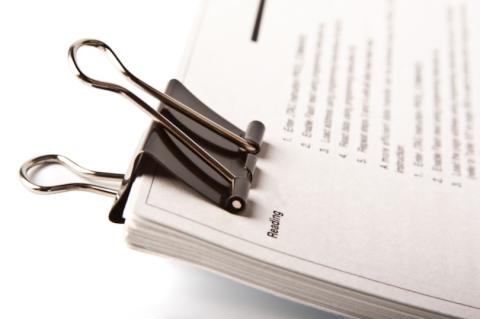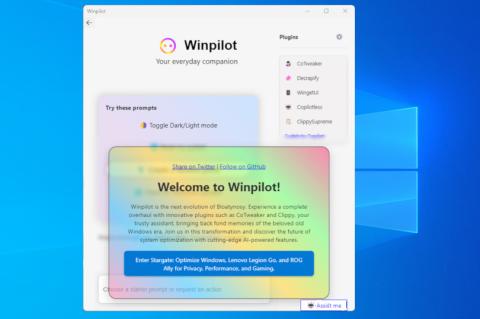Die J-Serie befaßt sich mit der Übertragung von Fernsehen, Klangprogrammen und anderen Multimediasignalen.
General Recommendations
J.1
Terminology for new services in television and sound-programme transmission
General Recommendations concerning sound-programme transmissions
J.11
Hypothetical reference circuits for sound-programme transmissions
J.12
Types of sound-programme circuits established over the international telephone network
J.13
Definitions for international sound-programme circuits
J.14
Relative levels and impedances on an international sound-programme connection
J.15
Lining-up and monitoring an international sound-programme connection
J.16
Measurement of weighted noise in sound-programme circuits
J.17
Pre-emphasis used on sound-programme circuits
J.18
Crosstalk in sound-programme circuits set up on carrier systems
J.19
A conventional test signal simulating sound-programme signals for measuring interference in other channels
Performance characteristics of sound-programme circuits
J.21
Performance characteristics of 15 kHz-type sound-programme circuits - Circuits for high quality monophonic and stereophonic transmissions
J.23
Performance characteristics of 7 kHz type (narrow-bandwidth) sound-programme circuits
J.24
Modulation of signals carried by sound-program circuits by interfering signals from power supply sources
J.25
Estimation of transmission performance of sound-program circuits shorter or longer than the hypothetical reference circuit
J.26
Test signals to be used on international sound-program connections
J.27
Signals for the alignment of international sound-program connections
Characteristics of equipment and lines used for setting up sound-programme circuits
J.31
[Withdrawn] Characteristics of equipment and lines used for setting up 15 kHz type sound-programme circuits
J.33
[Withdrawn] Characteristics of equipment and lines used for setting up 6.4 kHz type sound-programme circuits
J.34
[Withdrawn] Characteristics of equipment used for setting up 7 kHz type sound-programme circuits
Characteristics of equipment for coding analogue sound-programme signals
J.41
Characteristics of equipment for the coding of analogue high quality sound programme signals for transmission on 384 kbit/s channels
J.42
Characteristics of equipment for the coding of analogue medium quality sound-programme signals for transmission on 384-kbit/s channels
J.43
Characteristics of equipment for the coding of analogue high quality sound programme signals for transmission on 320 kbit/s channels
J.44
[Withdrawn] Characteristics of equipment for the coding of analogue medium quality sound-programme signals for transmission on 320 kbit/s channels
Digital transmission of sound-programme signals
J.51
General principles and user requirements for the digital transmission of high quality sound programmes
J.52
Digital transmission of high-quality sound-programme signals using one, two or three 64 kbit/s channels per mono signal (and up to six per stereo signal)
J.53
Sampling frequency to be used for the digital transmission of high-quality sound-programme signals
J.54
Transmission of analogue high-quality sound-programme signals on mixed analogue-and-digital circuits using 384 kbit/s channels
J.55
Digital transmission of high-quality sound-programme signals on distribution circuits using 480 kbit/s (496 kbit/s) per audio channel
J.56
Transmission of high-quality sound-programme analogue signals over mixed analogue/digital circuits at 320 kbit/s
J.57
Transmission of digital studio quality sound signals over H1 channels
Characteristics of circuits for television transmissions
J.61
Transmission performance of television circuits designed for use in international connections
J.62
Single value of the signal-to-noise ratio for all television systems
J.63
Insertion of test signals in the field-blanking interval of monochrome and colour television signals
J.64
Definitions of parameters for simplified automatic measurement of television insertion test signals
J.65
Standard test signal for conventional loading of a television channel
J.66
Transmission of one sound programme associated with analogue television signal by means of time division multiplex in the line synchronizing pulse
J.67
Test signals and measurement techniques for transmission circuits carrying MAC/packet signals or HD-MAC signals
J.68
Hypothetical reference chain for television transmissions over very long distances
Systems for television transmission over metallic lines and interconnection with radio-relay links
J.73
[Withdrawn] Use of a 12-MHz system for the simultaneous transmission of telephony and television
J.74
[Withdrawn] Methods for measuring the transmission characteristics of translating equipments
J.75
[Withdrawn] Interconnection of systems for television transmission on coaxial pairs and on radio-relay links
J.77
[Withdrawn] Characteristics of the television signals transmitted over 18 MHz and 60-MHz systems
Digital transmission of television signals
J.80
Transmission of component-coded digital television signals for contribution-quality applications at bit rates near 140 Mbit/s
J.81
Transmission of component-coded digital television signals for contribution-quality applications at the third hierarchical level of ITU-T Recommendation G.702
J.82
Transport of MPEG-2 constant bit rate television signals in B-ISDN
J.83
Digital multi-programme systems for television, sound and data services for cable distribution
J.84
Distribution of digital multi-programme signals for television, sound and data services through SMATV networks
J.85
Digital television transmission over long distances - General principles
J.86
Mixed analogue-and-digital transmission of analogue composite television signals over long distances
J.86
Mixed analogue-and-digital transmission of analogue composite television signals over long distances
Published as ITU-R Rec. CMTT 658-1 in CCIR Recommendations, Volume XII, Dⁿsseldorf, 1990
J.87
Use of hybrid cable television links for the secondary distribution of television into the user's premises
J.88
Transmission of enhanced definition television signals over digital links
J.89
Transport mechanism for component-coded digital television signals using MPEG-2 4:2:2 P@ML including all service elements for contribution and primary distribution
J.Imp89
Implementor's Guide for ITU-T Recommendation J.89
Specific Recommendations for television transmission
J.90
Electronic programme guides for delivery by digital cable television and similar methods - Reference operating scenario and requirements
J.91
Technical methods for ensuring privacy in long-distance international television transmission
J.92
Recommended operating guidelines for point-to-point transmission of television programmes
J.93
Requirements for conditional access in the secondary distribution of digital television on cable television systems
J.94
Service information for digital broadcasting in cable television systems
J.95
Copy protection of intellectual property for content delivered on cable television systems
J.96
Technical method for ensuring privacy in long-distance international MPEG-2 television transmission conforming to ITU-T Recommendation J.89
J.97
Metadata on cable networks
J.98
Metadata requirements for video-on-demand in cable networks
Transmission of signals with multiplexing of video, sound and data, and signals of new systems
J.100
Tolerances for transmission time differences between the vision and sound components of a television signal
J.101
Measurement methods and test procedures for teletext signals
J.100
Tolerances for transmission time differences between the vision and sound components of a television signal
J.101
Measurement methods and test procedures for teletext signals
J.110
Basic principles for a worldwide common family of systems for the provision of interactive television services
J.111
Network independent protocols for interactive systems
J.112
Transmission systems for interactive cable television services
J.Imp112
Implementor's Guide (04/03) for ITU-T Recommendation J.112 Annex B (03/01)
J.113
Digital video broadcasting interaction channel through the PSTN/ISDN
J.114
Interaction channel using digital enhanced cordless telecommunications
J.115
Interaction channel using the global system for mobile communications
J.116
Interaction channel for local multipoint distribution systems
J.117
Home digital network interface specification
J.118
Access systems for interactive services on SMATV/MATV networks
J.120
Distribution of sound and television programs over the IP network
J.121
Quality control protocol for webcasting
J.122
Second-generation transmission systems for interactive cable television services - IP cable modems
J.Imp122
Second-generation transmission systems for interactive cable television services - IP cable modems
J.123
Multiplexing format for webcasting on the TCP/IP network
J.124
Multiplexing format for multimedia webcasting over TCP/IP networks
J.125
Link privacy for cable modem implementations
J.126
Embedded Cable Modem device specification
J.Imp126
ImplementorÆs Guide for ITU-T Recommendation J.126 Embedded Cable Modem device specification
J.127
Transmission protocol for multimedia webcasting over TCP/IP networks
J.128
Set-top Gateway specification for transmission systems for interactive cable television services
J.131
Transport of MPEG-2 signals in PDH networks
J.132
Transport of MPEG-2 signals in SDH networks
J.133
Measurement of MPEG-2 transport streams in networks
J.140
Subjective picture quality assessment for digital cable television systems
J.141
Performance indicators for data services delivered over digital cable television systems
J.142
Methods for the measurement of parameters in the transmission of digital cable television signals
J.143
User requirements for objective perceptual video quality measurements in digital cable television
J.144
Objective perceptual video quality measurement techniques for digital cable television in the presence of a full reference
J.145
Measurement and control of the quality of service for sound transmission over contribution and distribution networks
J.146
Loop latency issues in contribution circuits for conversational TV programmes
J.147
Objective picture quality measurement method by use of in-service test signals
J.148
Requirements for an objective perceptual multimedia quality model
J.149
Method for specifying accuracy and cross-calibration of Video Quality Metrics (VQM)
J.150
Operational functionalities for the delivery of digital multiprogramme television, sound and data services through multichannel, multipoint distribution systems (MMDS)
J.151
RF remodulator interface for digital television
J.160
Architectural framework for the delivery of time-critical services over cable television networks using cable modems
J.161
Audio codec requirements for the provision of bidirectional audio service over cable television networks using cable modems
J.162
Network call signalling protocol for the delivery of time-critical services over cable television networks using cable modems
J.163
Dynamic quality of service for the provision of real-time services over cable television networks using cable modems
J.164
Event message requirements for the support of real-time services over cable television networks using cable modems
J.165
IPCablecom Internet signalling transport protocol (ISTP)
J.166
IPCablecom Management Information Base (MIB) framework
J.167
Media terminal adapter (MTA) device provisioning requirements for the delivery of real-time services over cable television networks using cable modems
J.168
IPCablecom media terminal adapter (MTA) MIB requirements
J.169
IPCablecom network call signalling (NCS) MIB requirements
J.170
IPCablecom security specification
J.171
IPCablecom Trunking Gateway Control Protocol (TGCP)
J.171.0
IPCablecom trunking gateway control protocol (TGCP)
J.171.1
IPCablecom trunking gateway control protocol (TGCP) Profile 1
J.171.2
IPCablecom trunking gateway control protocol (TGCP) Profile 2
J.172
IPCablecom management event mechanism
J.173
IPCablecom embedded MTA primary line support
J.174
IPCablecom interdomain quality of service
J.175
Audio server protocol
J.176
IPCablecom management event mechanism MIB
J.177
IPCablecom CMS subscriber provisioning specification
J.178
IPCablecom CMS to CMS signalling
J.179
IPCablecom support for multimedia
J.180
User requirements for statistical multiplexing of several programmes on a transmission channel
J.181
Digital program insertion cueing message for cable television systems
J.182
Parameter sets for analogue interface specifications for the interconnection of set-top boxes and presentation devices in the home
J.183
Time-division multiplexing of multiple MPEG-2 transport streams over cable television systems
J.184
Digital broadband delivery system: Out-of-band transport
J.185
Transmission equipment for transferring multi-channel television signals over optical access networks by FM conversion
J.186
Transmission equipment for multi-channel television signals over optical access networks by sub-carrier multiplexing (SCM)
J.187
Transport mechanism for component-coded digital high-definition television signals using MPEG-2 video coding including all service elements for contribution and primary distribution
J.188
A framework for an efficient parallel video transmission system including codecs with functions of failure detection and picture quality evaluation
J.189
Seamless splicing for MPEG-2 bit streams
J.190
Architecture of MediaHomeNet that supports cable-based services
J.191
IP feature package to enhance cable modems
J.Imp191
IP Feature Package to enhance cable modems
J.192
A residential gateway to support the delivery of cable data services
J.193
Requirements for the next generation of set-top-boxes
J.197
High level requirements for a Digital Rights Management (DRM) bridge from a cable access network to a home network
J.200
Worldwide common core û Application environment for digital interactive television services
J.201
Harmonization of declarative content format for interactive television applications
J.202
Harmonization of procedural content formats for interactive TV applications
J.240
Framework for remote monitoring of transmitted picture signal-to-noise ratio using spread-spectrum and orthogonal transform
J.241
Quality of service ranking and measurement methods for digital video services delivered over broadband IP networks
J.260
Requirements for preferential telecommunications over IPCablecom networks
J.280
Digital Program Insertion Splicing: application program interface
J.281
Requirements for multichannel video signal transmission over IP-based fibre network
J.600
Transport of Large Screen Digital Imagery (LSDI) applications that employ MPEG-2 encoded HDTV signals
J.601
Transport of Large Screen Digital Imagery (LSDI) applications for its expanded hierarchy
Supplements
J.Sup1
Example of linking options between annexes of ITU-T Recommendation J.112 and annexes of ITU-T Recommendation J.83
J.Sup2
Guidelines for the implementation of Annex A of Recommendation J.112, "Transmission systems for interactive cable television services" - Example of Digital Video Broadcasting (DVB) interaction channel for cable television distribution
J.Sup3
Guidelines for the implementation of Recommendation J.111 "Network independent protocols" - Example of Digital Video Broadcasting (DVB) systems for interactive services
J.Sup4
[Withdrawn] Terminology for new services in television and sound-programme transmission
J.Sup5
Guidelines on the use of some ITU-T Recommendations in the J series
J.Sup12
[Withdrawn] Intelligibility of crosstalk between telephone and sound-programme circuits


